 France (1893-1927) – Armored Cruiser
France (1893-1927) – Armored CruiserWW1 French Cruisers
Sfax | Tage | Amiral Cecille | D'Iberville class | Dunois class | Foudre | Davout | Suchet | Forbin class | Troude class | Alger class | Friant class | Linois class | Descartes class | D'Assas class | D’Entrecasteaux | Protet class | Guichen | Chateaurenault | Chateaurenault | D'Estrées class | Jurien de la Graviere | Lamotte-Picquet classDupuy de Lome | Amiral Charner class | Pothuau | Jeanne d'Arc | Gueydon class | Dupleix class | Gloire class | Gambetta class | Jules Michelet | Ernest Renan | Edgar Quinet class
The French Armoured cruiser Pothuau was built in the 1890s as a one-off derivative of the Dupuy de Lôme. Laid down on 25 May 1893 at FCM in Granville, she was completed 9 July 1897, commissioned a month earlier. Like the previous armoured cruiser, she had a prominent plough bow, but also three funnels. She spent most of her active career in the Mediterranean, and was demoted as a gunnery training ship in 1906. In WWI she took part in the Cameroon expedition before being transferred to the Red Sea and Indian Ocean in 1916, escorting convoys while searching for German commerce raiders, such as Wolf, in mid-1917. Back home, she resumes her training routine until decommissioned in 1926, sold. #ww1 #marinenationale #frenchnavy #pothuau #armouredcruiser
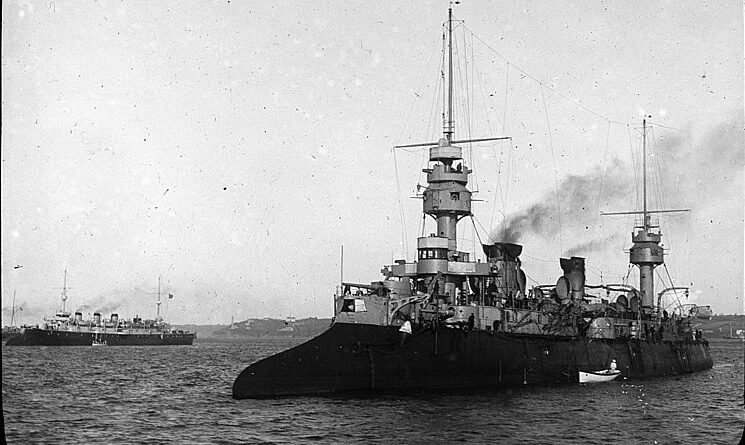
Pothuau in the background, with Dupuy de Lôme on the foreground, Brest roadstead, northern fleet as completed.
Design of Pothuau
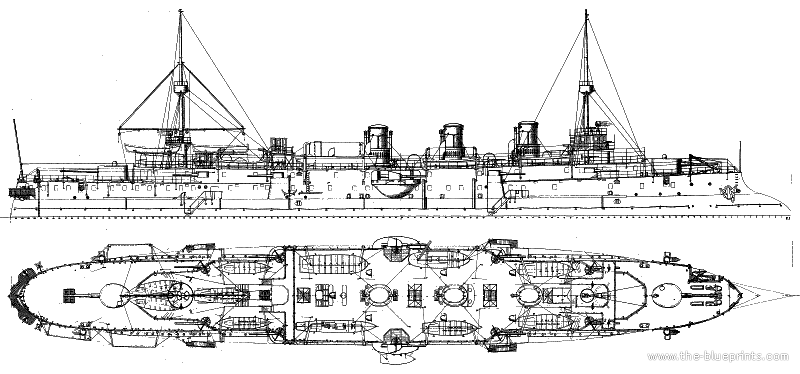
Pothuau followed both Dupuy de Lôme, the prototype of French armoured cruisers, and the four Amiral Charner class. All had been criticized for their slow speed, between 18 and 19.7 knots in trials, far less in even a moderate sea. The new cruiser was to experiment with a new machinery arrangement, new hull shape, and also thinning some of the armour to regain a more favourable power to displacement ratio.
She was ordered at FCM (Forges et Chantiers de la Méditerranée) at its western yard, at Granville, Brittany, Le Havre section, laid down on 25 May 1893, so three years after Latouche-Tréville at the same yard on 26 April 1890. This left time to digest lessons of the Jeune Ecole which stressed the use of armoured cruisers to attack trade and a defence of torpedo boats (to schematise), more on the 1890 French Navy page.
Hull and general Design
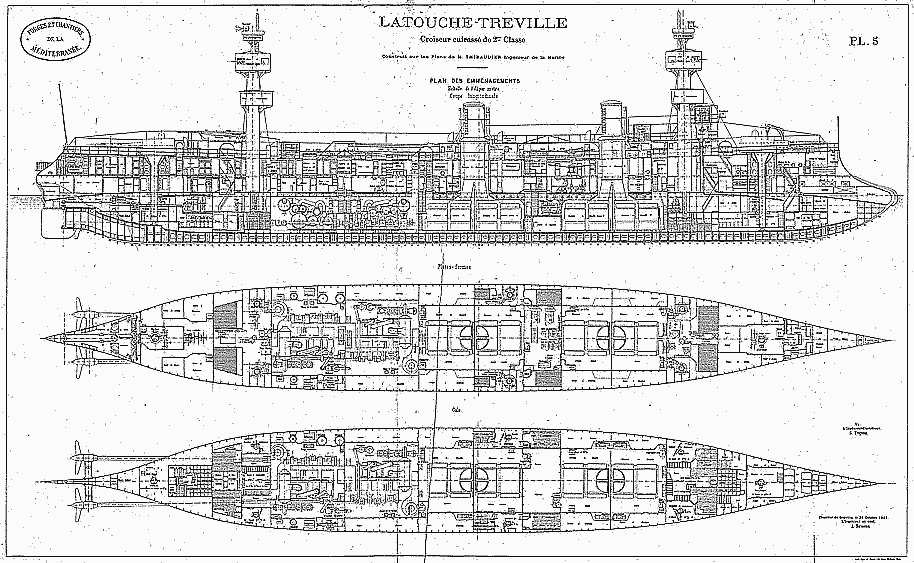
Latouche-Tréville or the Charner class to compare
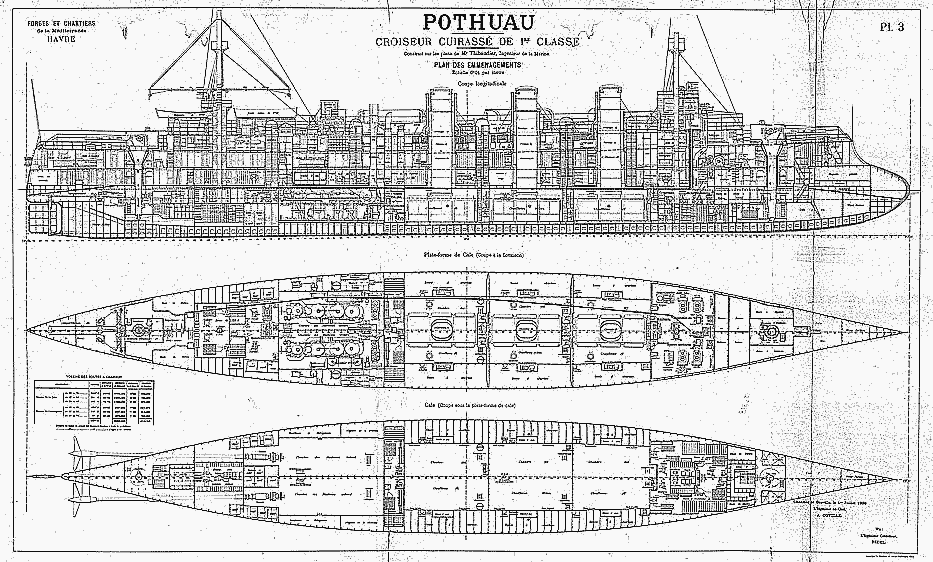
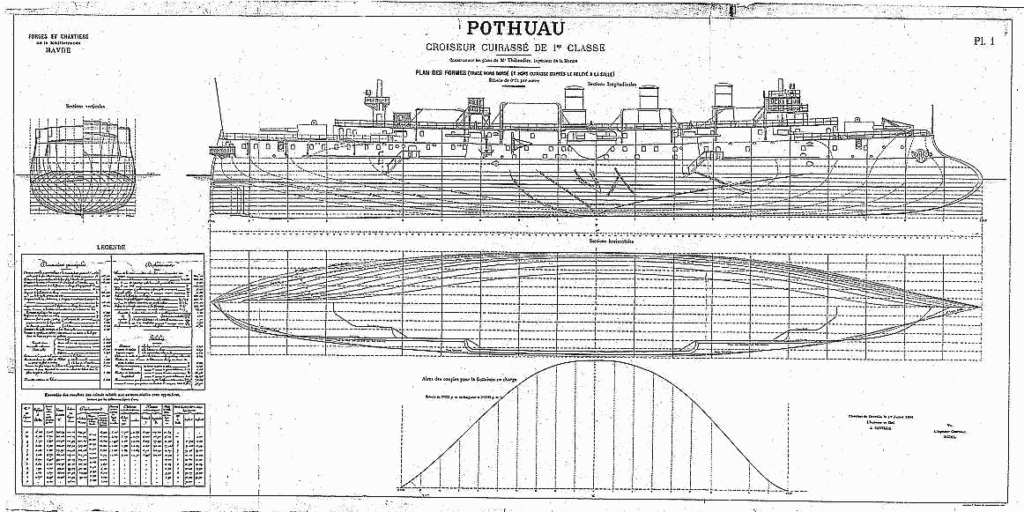
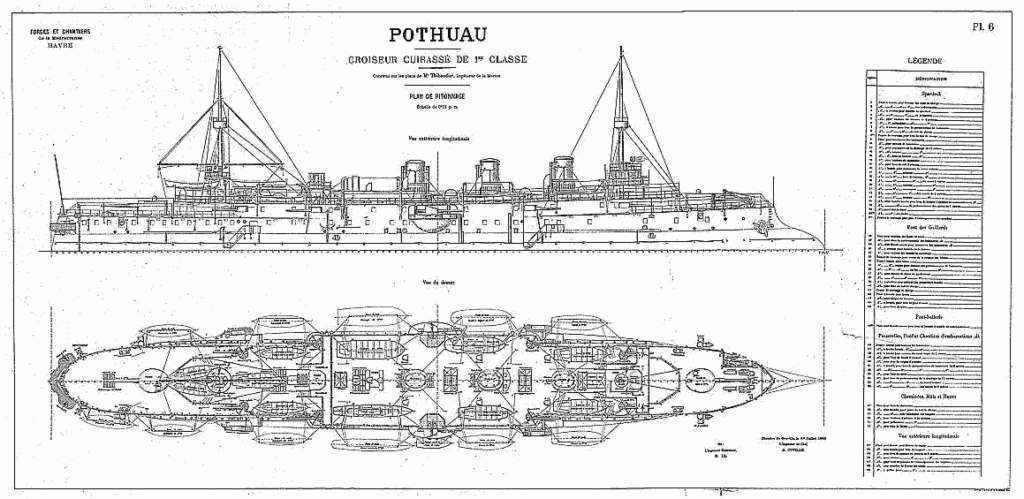
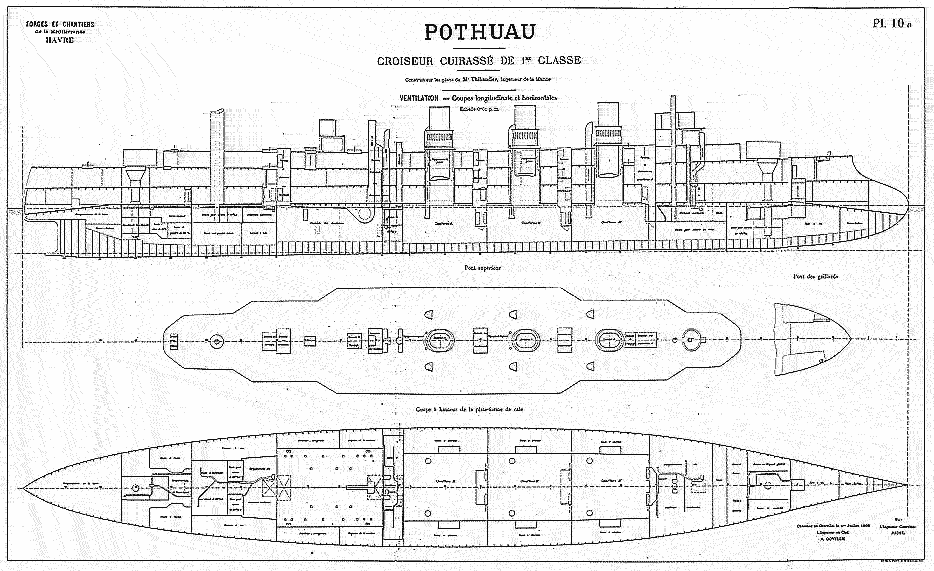

Various hull plans of the Pothuau and cutaways
Like the previous cruisers, she still had a prominent ram bow, as well as but pointy stern slightly slanted for fine exit lines, and lozenge-like hull with tumble home, all the trademark of her age. She was relatively modest in size compared to what other navies made at the time (like the Russian Pacific cruisers or the Powerful class) measured 113.1 metres (371 ft 1 in) overall in length, for a beam of 15.3 metres (50 ft 2 in), maximum draught of 6.4 metres (21 ft) for a displacement of 5,460 tonnes (5,374 long tons) normal load up to 5,690 tonnes (5,600 long tons) when fully loaded. Despite her odd-looking hull, she was still considered a good sea boat, and was scheduled for the Mediterranean, anyway, less stormy than the North Sea or Atlantic.
She was different only in the fact she had a long superstructure running all the way to the stern, from the forward to the aft main turrets. It was impossible to walk all the war to the stern as the structure extended to the freeboard to allow the side sponsons best arc of fire. The small bridge, situated a bit aft of the structure, consisted in the main conning tower, with a wooden-panneled command bridge built above. The chadburn, steering wheel and acoustics were all duplicated; There were then three round funnels, relatively short and placed heavenly aft. The ship had to pole masts of equal size, although the lower section of the foremast was a thick steel tube supporting the main lookout post and a thinner one on the aft mast. They also supported light platforms.
There were four boats davits alongside the structure, a small telegraphic post on a platform aft and came the quarterdeck house, followed by the aft mast.
Her crew comprised 21 officers and 434 ratings, but she could be used as flagship with 5 officers and 29 additional personal.
Protection
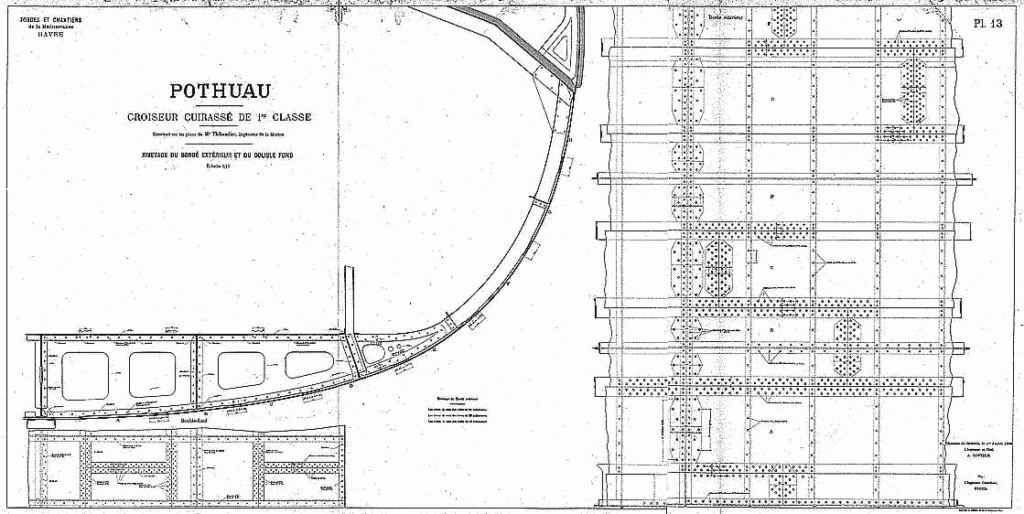
Details of the double hull
Pothuau was protected by nickel-steel armour for her belt going from 52mm (2 in) at the ends, up to 80 mm (3.1 in) amidships, extending below the waterline down to 1.2 metres (3 ft 11 in) but also 2.5 metres (8 ft 2 in) above it, again amidshhips. This was quite thin for an “armoured cruisers”, and many in internaitonal press call them protected cruisers instead.
There was the usual curved protective deck ranging from 55 to 105 millimetres (2.2–4.1 in) thick, the latter being on the sloped parts connecting to the belt below the waterline. The conning tower had 240 millimetres (9.4 in) thick walls and the boiler rooms, engine rooms and magazines all had a thin splinter deck above. There was no longitudinal bulkheads, only regular transvers ones and underwater compartimentation was completed by a partial double bottom. Turret were circular and protected by 180 millimetres (7.1 in) walls. Casemates had 84 millimetres (3.3 in) thick plated. The whole armour weight represented still 1,346 tonnes (1,325 long tons), not negligible for a 5000 tonnes vessel.
Powerplant and performances
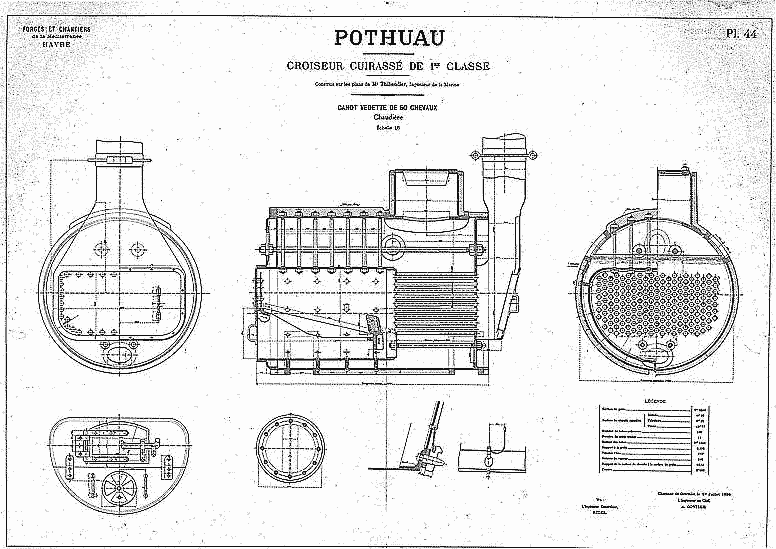
Pothuau had two four-bladed 4.4-metre (14 ft 5 in) bronze screw propellers, driven by two vertical triple-expansion (VTE) steam engines, while steam camed from 18 Belleville boilers, working at a pressure of 17 kg/cm2 (1,667 kPa; 242 psi). This powerplant had a total output of 10,000 indicated horsepower (7,500 kW; 10,000 PS) on forced draught. Pothuau in fact exceeded her designed speed of 19 knots (35 km/h; 22 mph) in sea trials, at 19.2 knots (35.6 km/h; 22.1 mph) obtained froom 10,398 PS (7,648 kW). As for range, she carried 630 tonnes (620 long tons) of coal in peacetime conditions, providing 4,500 nautical miles (8,300 km; 5,200 mi) of range at 10 knots cruise speed (19 km/h; 12 mph), wel enough for Mediterranean operations.
Armament
Main: 2x 194mm/40 M1893
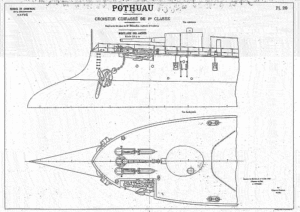 Pothau kept the typical lozenge configuration of previous French cruisers and battleships of that time, with the four main cannons placed in two turrets for and aft (the fore turret was quite close to the bow). Here the forward turret was pretty close to the end of the bow deck, but in reality far enough from seaspray due to the plough bow (at least in theory).
Pothau kept the typical lozenge configuration of previous French cruisers and battleships of that time, with the four main cannons placed in two turrets for and aft (the fore turret was quite close to the bow). Here the forward turret was pretty close to the end of the bow deck, but in reality far enough from seaspray due to the plough bow (at least in theory).
Pothuau’s main armament comprised two 194 mm (7.6 in) M 1893 guns in single-gun turrets at each end of the superstructure, firing 75–90.3-kgs(165–199 lb) shells at 770-800 mps (2,500 to 2,600 ft/s).
Secondary: 10x 138mm/40 M1893
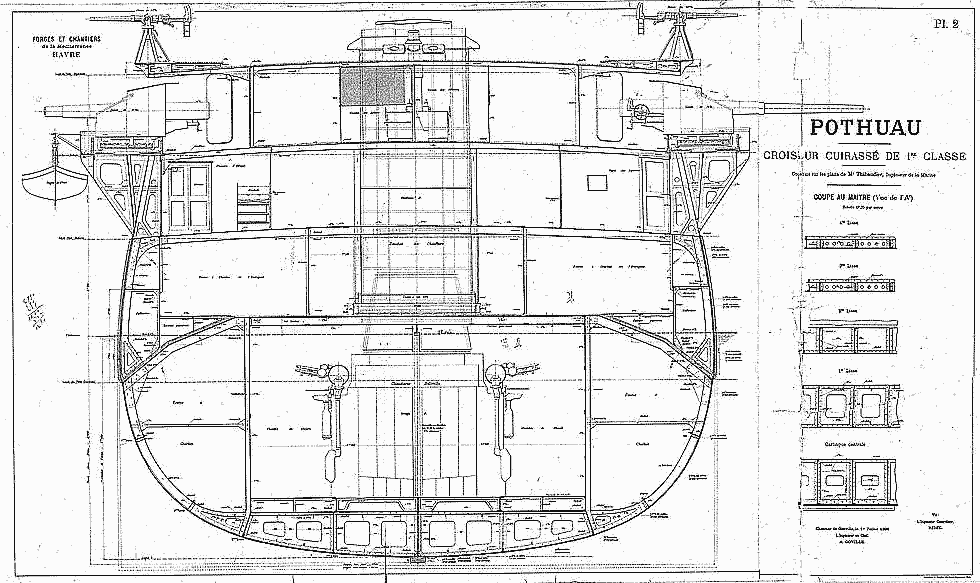
These ten 40-calibre 138 mm (5.4 in) Modèle 1893 guns, were placed in sponsoned broadside casemates. They fired 30–35-kgs (66–77 lb) at 730 to 770 mps (2,400 to 2,500 ft/s), range 10,000 m (14,000 yd) at 25°.
Misc.: 12x 47mm, 8x 37mm Hotchkiss and TTs
close-range anti-torpedo boat defense was assured by the following:
-Twelve quick-firing (QF) 47-millimetre (1.9 in) placed on the structure, on upper deck platforms.
-Eight QF 37-millimetre (1.5 in) Hotchkiss guns, same.
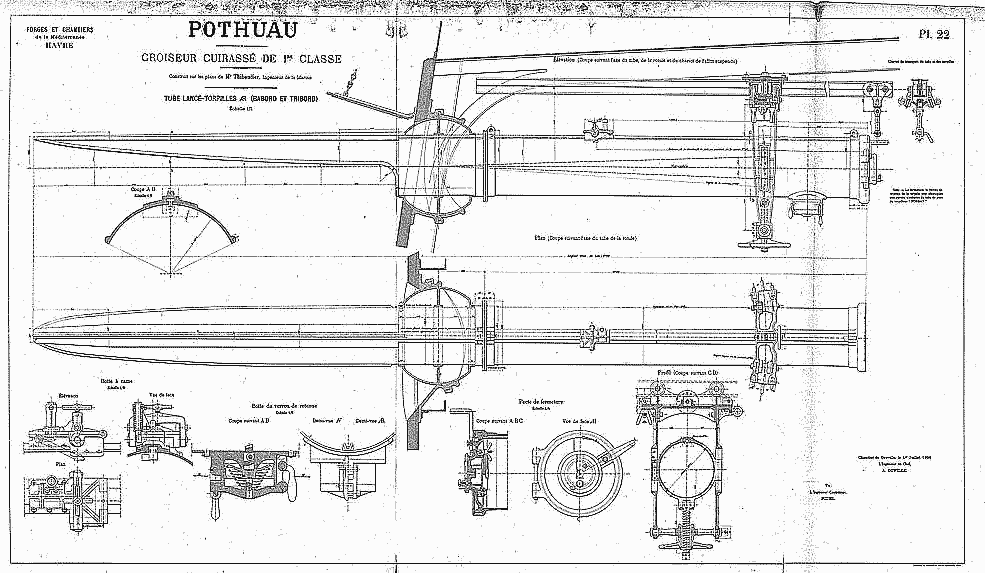
She was also armed with four 450-millimetre (17.7 in)torpedo tubes, all above-water in rotating torpedo tubes.
Pothuau Specifications |
|
| Dimensions | 113.1 x 15.3 x 6.4 m (371.1 ft x 50.2 ft x 21 ft) |
| Displacement | 5,460 t standard, 5800 tonnes FL |
| Crew | 450 wartime |
| Propulsion | 2 TE steam engines, 18 Belleville boilers, 10,000 ihp (7,500 kW) |
| Speed | 19 kn (35 km/h; 22 mph) |
| Range | 4,500 nmi (8,300 km, 5,200 mi) |
| Armament | 2× 194 mm, 10× 138mm, 12× 47 mm, 8x 37mm, 4× 450 mm (18 in) TTs |
| Armor | Belt 80, Turrets 180, CT 240, Decks 105, Battery 54 mm |
Career of Pothuau
Prewar Service 1896-1914
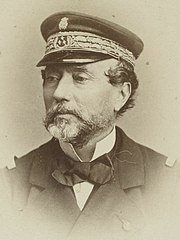 Pothuau was named after amiral and later politician Louis Pierre Alexis Pothuau (1815-1882). He became a prominent figure diring the 1870 insurrection of Paris.
Pothuau was named after amiral and later politician Louis Pierre Alexis Pothuau (1815-1882). He became a prominent figure diring the 1870 insurrection of Paris.
The cruiser had a rocky start with two failed launches, on 22 and 23 August. She was commissioned for sea trials first on 17 August 1896, before being accepted and definitively commissioned on 8 June 1897, from the builder on 9 July to ask for a price of 11,156,422 francs.
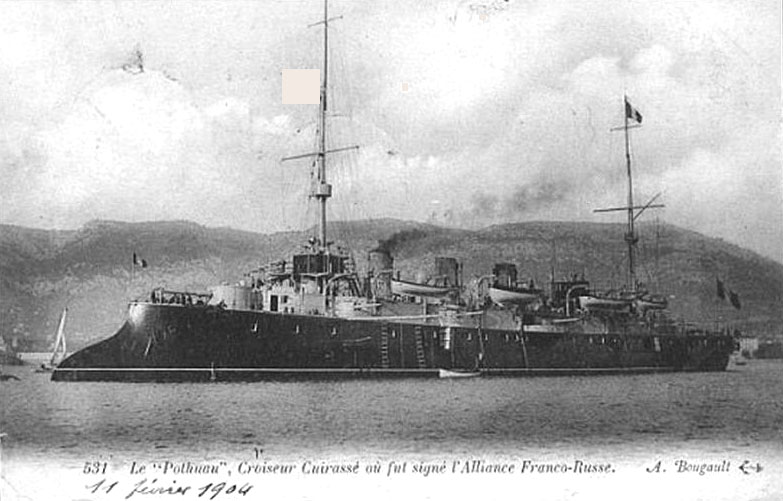
Since she was built in Britanny, she started with the Escadre du Nord (Northern Squadron) and sailed to Britain to represent the country at the Queen Victoria’s Diamond Jubilee Fleet Review by June 1897, also conveying French President Félix Faure, from Dunkerque to Russia in the next August for an official visit. In October 1897, she welcomed the President of the Republic Félix Faure during his trip to Saint Petersburg. On August 26, the president hosted a lunch on board in honor of Tsar Nicholas II and the Tsarina. During the exchange of toasts, the emperor praised the new bond uniting “two friendly and allied nations”, thus sealing the Franco-Russian alliance.
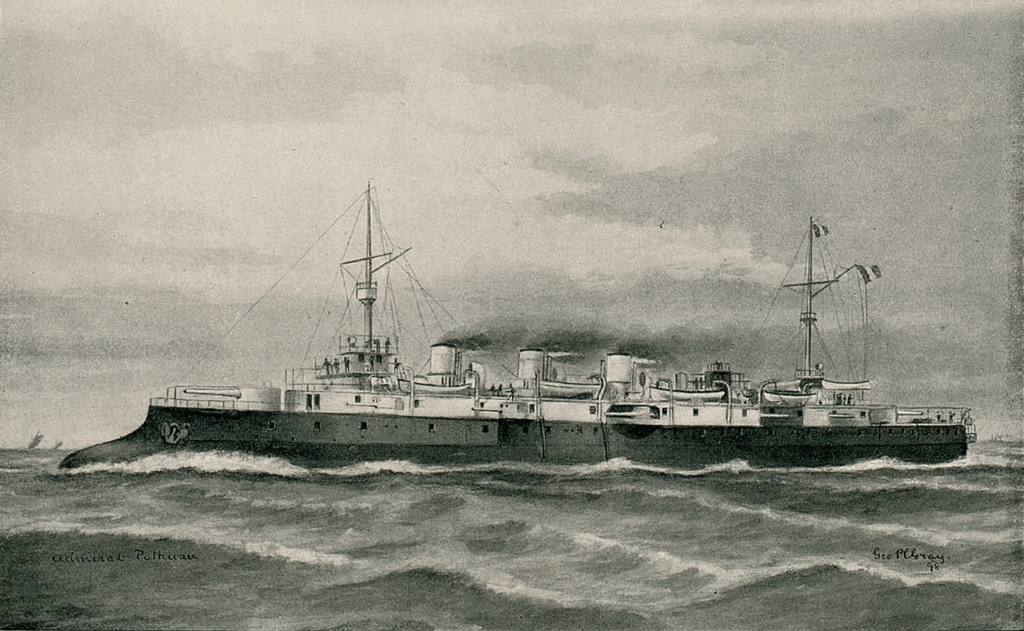
Engraving in Brassey’s 1898
Pothuau was then transferred to the Escadre de Méditerranée (Mediterranean Fleet) in 1898, as flagship of the Light Squadron. In the annual naval maneuvers of June–July 1900, she became flagship for the Counter Admiral Maréchal, relieved by Caillard later. By May 1904 she was relieved as flagship of the Cruiser Squadron, placed into reserve by mid-1905. She was recommissioned on 17 April 1906 as gunnery training ship and then flagship of the combined gunnery school (Contre-Amiral Le Bris) in 1910. She notably tested a new fire-control system. Her rolme went on until July 1914. It should be said that in 1905, both as the result of a degradation of prestige and credibility for the Jeune Ecole and early lessons of the Russo-Japanese war, Franced viewed these 1890s cruisers as too slow to be effective and started to removed them from service.
Wartime Service and beyond
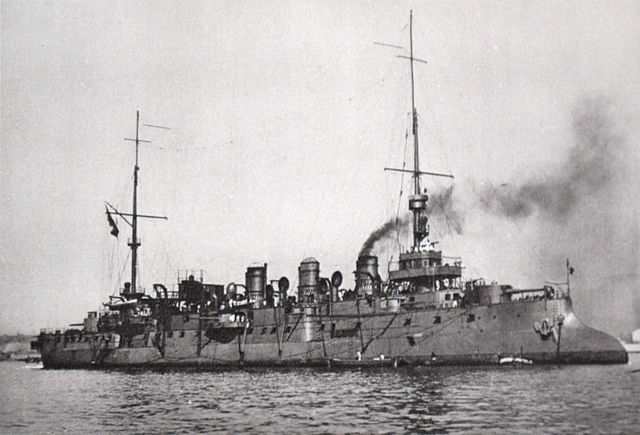
In August 1914, Pothuau was assigned to the 1st Armée Navale (Main Fleet), and she was tasked to patrol the eastern coast of Spain with Jauréguiberry and Bouvet. In September they were reassigned the the Thyrrenian sea and patrolling between Corsica and Italy. They were looking for German reservists sailing from Barcelona to Genoa as Italy was still neutral and leaning towards the central Empires. On 24 October, Pothuau was ordered to support the invasion of the German colony of Kamerun (Cameroon) in Africa. She provided shore support until relieved by Friant on 21 June 1915. Back to Lorient on 19 July she started an overhaul until 2 January 1916. Next she was reassigned to the Red Sea – Indian Ocean convoy area as the allies were keen to protect troopships and supplies from their Eempire to the Mediterranean theater or France via Marseilles. She escorted Allied merchant ships while looking for possible incursions of German commerce raiders.
Next she was teamed with the British seaplane tender Raven II, for extra eyes, looking throughout the vast Indian Ocean after the German merchant raider Wolf on 10 March 1917, last signelled here, and later Laccadive Islands (possible coaling point) while en route to Colombo (Ceylon), reached on 2 April. They departed again for the Chagos Archipelago, Maldive Islands and back to Colombo, never finding the raider. On 17 May, Pothuau entered the French Indochina capital of Saigon to be overhauled and sent back to the Mediterranean in September. In Toulon, she had another refit until 9 November and she saw her structure modified to operate a kite balloon.
After the armistic of 1918, there were discussions to scrap her, but she eventualy was found conventient for her prewar role, and resumed her gunnery training activities as “navire-école d’artillerie”, having her main gun turrets replaced by experimental AA guns. She was eventually decommissioned on 12 June 1926, stricken on 3 November 1927, sold for BU at 2,017,117 francs on 25 September 1929 at the Société du Matériel Naval du Midi.
Sources/Read More
plans on 3dhistory.de
on en.wikipedia.org/
on navypedia.org/
on battleships-cruisers.co.uk/
Photo of the aft turret of Pothuau decorated to celebrate the Franco-Russian alliance, colorized by postales navales
Photo of Pothuau postwar
Models Kits

Kombrig model 1:700, now quite rare.
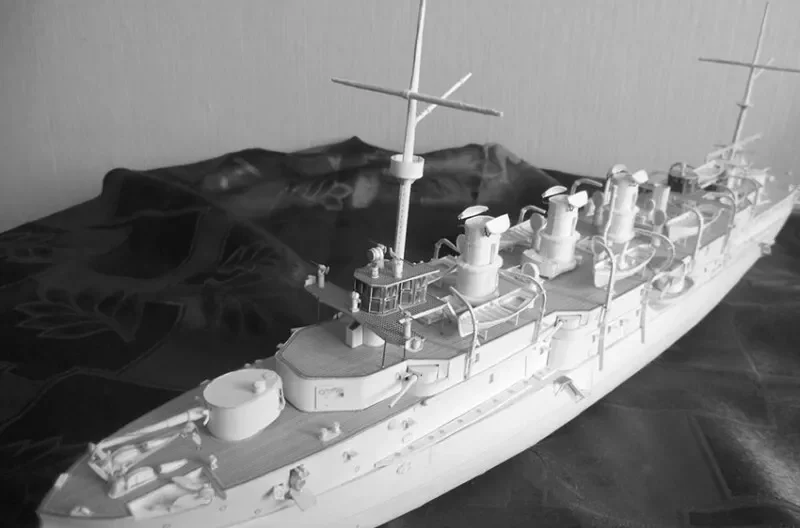
russian paper model pothuau OREL Paper Model Kit Armored Cruiser Pothuau 1/200 284 Navy France, 1897


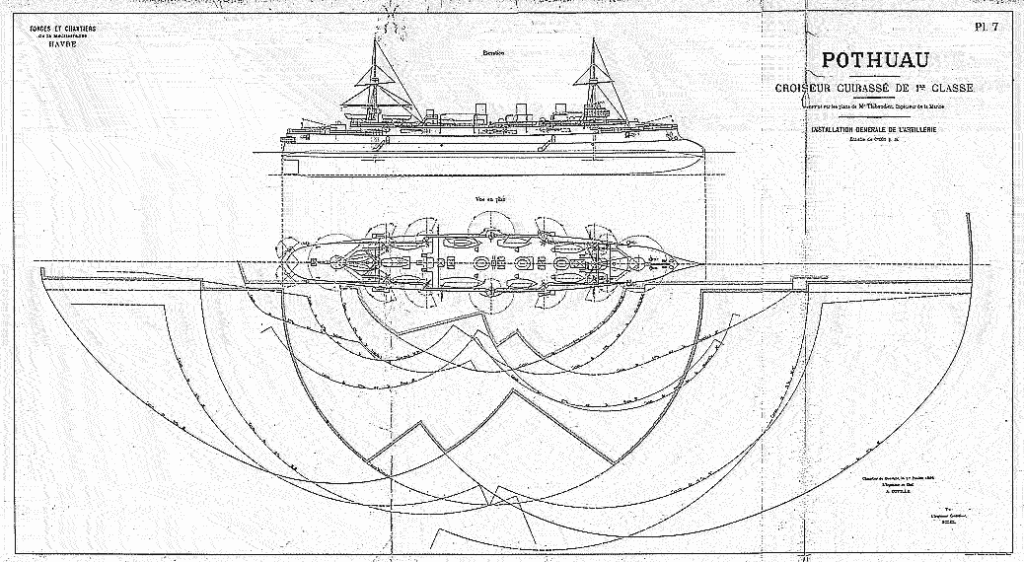
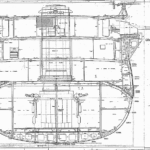

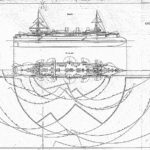
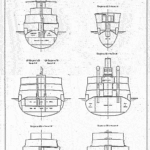
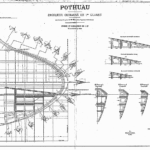
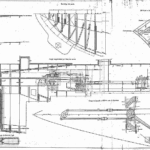
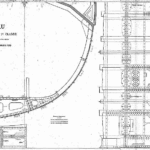
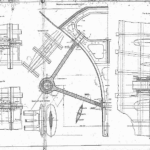
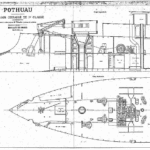
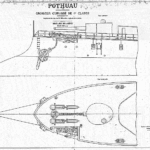
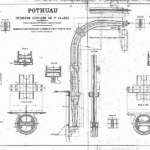
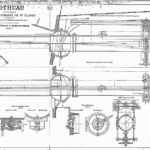
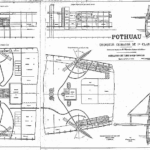
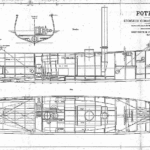
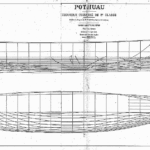
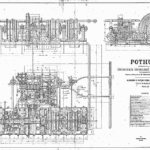
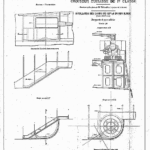

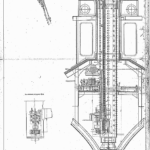
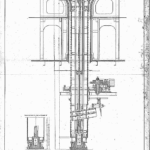
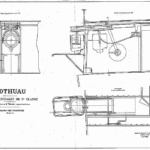
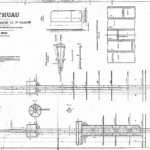
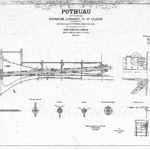
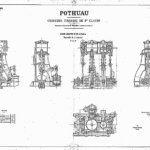
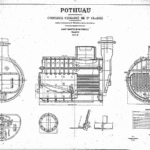
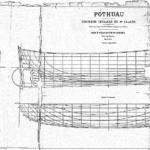
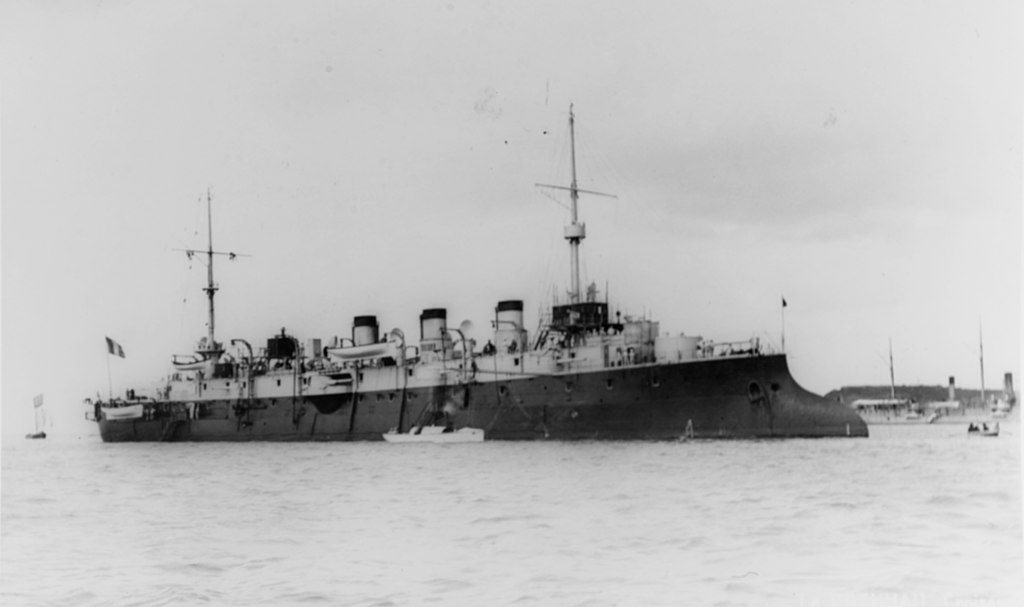
 Latest Facebook Entry -
Latest Facebook Entry -  X(Tweeter) Naval Encyclopedia's deck archive
X(Tweeter) Naval Encyclopedia's deck archive Instagram (@navalencyc)
Instagram (@navalencyc)





 French Navy
French Navy Royal Navy
Royal Navy Russian Navy
Russian Navy Armada Espanola
Armada Espanola Austrian Navy
Austrian Navy K.u.K. Kriegsmarine
K.u.K. Kriegsmarine Dansk Marine
Dansk Marine Nautiko Hellenon
Nautiko Hellenon Koninklije Marine 1870
Koninklije Marine 1870 Marinha do Brasil
Marinha do Brasil Osmanlı Donanması
Osmanlı Donanması Marina Do Peru
Marina Do Peru Marinha do Portugal
Marinha do Portugal Regia Marina 1870
Regia Marina 1870 Nihhon Kaigun 1870
Nihhon Kaigun 1870 Preußische Marine 1870
Preußische Marine 1870 Russkiy Flot 1870
Russkiy Flot 1870 Svenska marinen
Svenska marinen Søværnet
Søværnet Union Navy
Union Navy Confederate Navy
Confederate Navy Armada de Argentina
Armada de Argentina Imperial Chinese Navy
Imperial Chinese Navy Marinha do Portugal
Marinha do Portugal Mexico
Mexico Kaiserliche Marine
Kaiserliche Marine 1898 US Navy
1898 US Navy Sovietskiy Flot
Sovietskiy Flot Royal Canadian Navy
Royal Canadian Navy Royal Australian Navy
Royal Australian Navy RNZN Fleet
RNZN Fleet Chinese Navy 1937
Chinese Navy 1937 Kriegsmarine
Kriegsmarine Chilean Navy
Chilean Navy Danish Navy
Danish Navy Finnish Navy
Finnish Navy Hellenic Navy
Hellenic Navy Polish Navy
Polish Navy Romanian Navy
Romanian Navy Turkish Navy
Turkish Navy Royal Yugoslav Navy
Royal Yugoslav Navy Royal Thai Navy
Royal Thai Navy Minor Navies
Minor Navies Albania
Albania Austria
Austria Belgium
Belgium Columbia
Columbia Costa Rica
Costa Rica Cuba
Cuba Czechoslovakia
Czechoslovakia Dominican Republic
Dominican Republic Haiti
Haiti Hungary
Hungary Honduras
Honduras Estonia
Estonia Iceland
Iceland Eire
Eire Equador
Equador Iran
Iran Iraq
Iraq Latvia
Latvia Liberia
Liberia Lithuania
Lithuania Mandchukuo
Mandchukuo Morocco
Morocco Nicaragua
Nicaragua Persia
Persia San Salvador
San Salvador Sarawak
Sarawak Uruguay
Uruguay Venezuela
Venezuela Zanzibar
Zanzibar Warsaw Pact Navies
Warsaw Pact Navies Bulgaria
Bulgaria Hungary
Hungary

 Bundesmarine
Bundesmarine Dutch Navy
Dutch Navy Hellenic Navy
Hellenic Navy Marina Militare
Marina Militare Yugoslav Navy
Yugoslav Navy Chinese Navy
Chinese Navy Indian Navy
Indian Navy Indonesian Navy
Indonesian Navy JMSDF
JMSDF North Korean Navy
North Korean Navy Pakistani Navy
Pakistani Navy Philippines Navy
Philippines Navy ROKN
ROKN Rep. of Singapore Navy
Rep. of Singapore Navy Taiwanese Navy
Taiwanese Navy IDF Navy
IDF Navy Saudi Navy
Saudi Navy Royal New Zealand Navy
Royal New Zealand Navy Egyptian Navy
Egyptian Navy South African Navy
South African Navy






























 Ukrainian Navy
Ukrainian Navy dbodesign
dbodesign